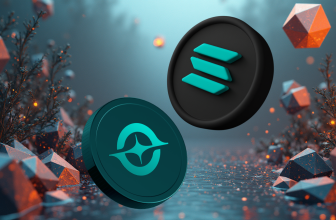
Parachains, which exist on ecosystems including the Polkadot network, have taken blockchain technology to the next step. Through parachain slot auctions, businesses can bid native crypto to be attached to the network. When they’re on the network, they run a project across numerous blockchains that all communicate together securely. Parachain technology has helped to plug the problem of inoperability within the blockchain system. Although in the teething stages, the technology has the potential to allow integration between blockchain systems and the real world. Below, we will define parachains and discuss three of the best parachain projects so far.

What you'll learn 👉
What Is a Parachain Slot Auction?
Parachain slot auctions allow businesses to use the Polkadot ecosystem for a fixed term, with the minimum being three months. To do this, a candles-style auction takes place to allow bidding for a slot. If a slot is won, the investments contained within the bid are locked and returned when the slot lease is up. When a company moves into the parachain slot, they can make the most of the time by developing projects that allow several “blockchains” to communicate together. The starting bid for any parachain slot is 5 DOT. To make the system more interesting, each parachain slot is built for a different purpose. Now, we will discuss three notable parachain auction projects.
Astar Network
Astar is aiming to develop the internet for the people, instead of the company. They are a dApp hub, built across multiple chains which exist on the Polkadot network. Their system supports Layer 2 solutions, WebAssembly, Layer 1 blockchains, and the Ethereum Virtual Machine. In the native form, Polkadot doesn’t allow for smart contracts, which is where Astar Network comes in. They can offer smart contracts that are interoperable across layer 1 blockchains and virtual learning machines.
Bifrost
Bifrost exists on the outer layer of the Polkadot network and allows devs to work with multiple blockchains simultaneously. Once a developer has staked DOT in the crowd loan, they gain access to Bifrost. Once on the inside, they can create their networks of dApps on a separate ecosystem. Built with Bifrost, there is BiFi, which is a Defi that runs across multiple blockchains and plugs into the Bitcoin system. This is a fantastic move forward that takes Defi and opens it up to more than just the Ethereum network.
Centrifuge
Centrifuge is unique because it’s the first parachain project that links the real world to Defi. The project is concerned with investing and liquidity, allowing companies the chance to access the capital of Defi. Further, investors can access more stabilized rates thanks to the way Centrifuge is set up.
Parachain projects are leading the charge of third-generation blockchain tech. By allowing projects to be developed across numerous secure blockchains, Defi and dApps are more readily available to the people and have greater scalability. The communication between blockchains is a significant flaw to cover, and the Polkadot network of parachains is doing just that.








